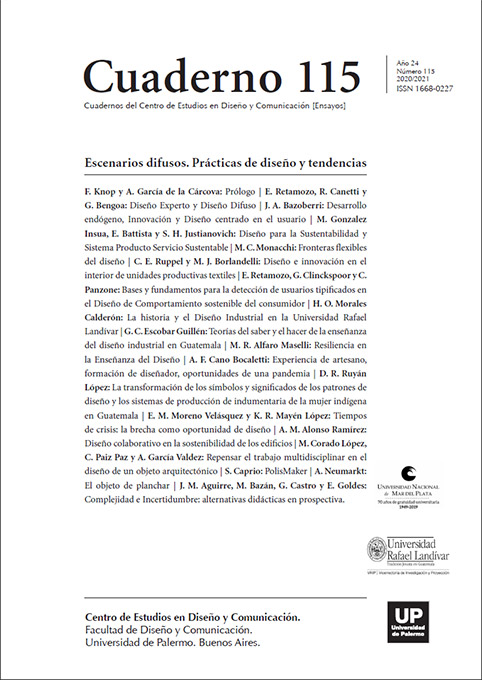PolisMaker. Figura clave en el Diseño y la transformación urbana
Abstract
The PolisMaker is a -city manager-, a -facilitator-, a local, global and glocal urban strategist with the task of presiding over the transformation of the city and the territory. His reading of urban phenomena combines technical knowledge with a particular sensitivity for the well-being of man, making use of collaborative design, combining quality of life with economic development at different scales, taking into account existential space and dynamics economic and social that constitute the flow of daily life.
As a builder of urban strategies, with a marked endogenous development and due to its interdisciplinary nature, it covers from sectors of the Public Administration, transnational organizations and stakeholders, to real estate development companies or entities specialized in the reconstruction of urban settlements haunted by catastrophes or calamities of anthropic or natural origin.
It uses a set of cutting-edge techniques aimed at capturing the social value of public goods, with special reference to the benefits generated by future direct, indirect and potential users through the use of multicriteria analyzes of value and common benefits under systemic innovation.
The objective of this writing offers reflections on the present and the future of this discipline, PolisMaker (Politecnico di Milano), academic training and figure that accompanies, in its twentieth year, decisions in urban transformation.
References
Camargo, M. (1999). Calidad de vida y capacidades humanas. Venezuela: Universidad de los Andes.
Caprio, S. & Caruso di Sppaccaforno, A. (2012). Environmental and Urban Economics. Italia: laScientifica Editore.
Caprio, S.; Caruso di Sppaccaforno, A. & Santoro, C. (2013). The Skyscraper, the City for the Human Being. The Skyscraper. Where? And for Whom? Milano: PolisMaker Lab - Politecnico di Milano.
Caprio, S. & Caruso di Sppaccaforno, A. (2013). Piccoli Borghi / Processi di rinascita attraverso il recupero delle identità locali. Italia: laScientifica Editore.
Caprio, S. & Caruso di Sppaccaforno, A. (2019). Verso una Pianificazione Olistica. Milano: PolisMaker Lab - Politecnico di Milano.
Caprio, S. (2016). Índice de calidad de vida urbana: Considerando lo urbano, el hábitat, los aspectos sociales y la satisfacción de las necesidades materiales e inmateriales. Milano: PolisMaker Lab.
Caruso di Sppaccaforno, A. (2002). Città Costruita, qualità del vivere. Desideri, valori, regole. Milano: Marietti 1820.
Centeno L. y Pereira, A. (2016). Ideopolis: knowledge city-regions Lisbon case study. Ireland: The Work Foundation.
De Carlo, G. (2016). La Citta E Il Territorio. Roma: Publisher Quodlibet.
Harari, N. Y. (2011). Sapiens, Une bréve histoire de l’humanité. Paris: Albin Michel Editeur.
Lang, R. & Lefurgy, J. B. (2012). Boomburbs: The Rise of America’s Accidental Cities. Washington DC: Brookings Institute Press.
Maslow, A. H. (1962). Toward a Psychology of Being. New York: Van Nostrand Reinhold Press.
Miles, L. D. (1943). Techniques of Value Analysis and Engineering. New York: McGraw-Hill.
Montgomery, Ch. (2013). Happy City: Transforming Our Lives Through Urban Design. Canada: Doubleday.
Morin, E. (1992). El paradigma perdido: ensayo de bioantropología. Barcelona: Editorial Kairós.
Papageorgiou, Y. (2018). The Isolated City State. An Economic Geography of Urban Spatial Structure. London: Routledge.
Scott Thomas, G. (2017). Micropolitan America: A Statistical Guide to Small Cities Across the Nation. Rochester: Niawanda Books.
Sen, A. K. y Nussbaum, M. C. (2002). La calidad de vida. México: Fondo de Cultura Económica.
Stoner, J. (2018). Hacia una arquitectura menor. Madrid: Bartlebooth Press.
Zevi, B. (1991). Saber Ver La Arquitectura. Barcelona: Poseidón.
Los autores/as que publiquen en esta revista ceden los derechos de autor y de publicación a "Cuadernos del Centro de Estudios de Diseño y Comunicación", Aceptando el registro de su trabajo bajo una licencia de atribución de Creative Commons, que permite a terceros utilizar lo publicado siempre que de el crédito pertinente a los autores y a esta revista.


